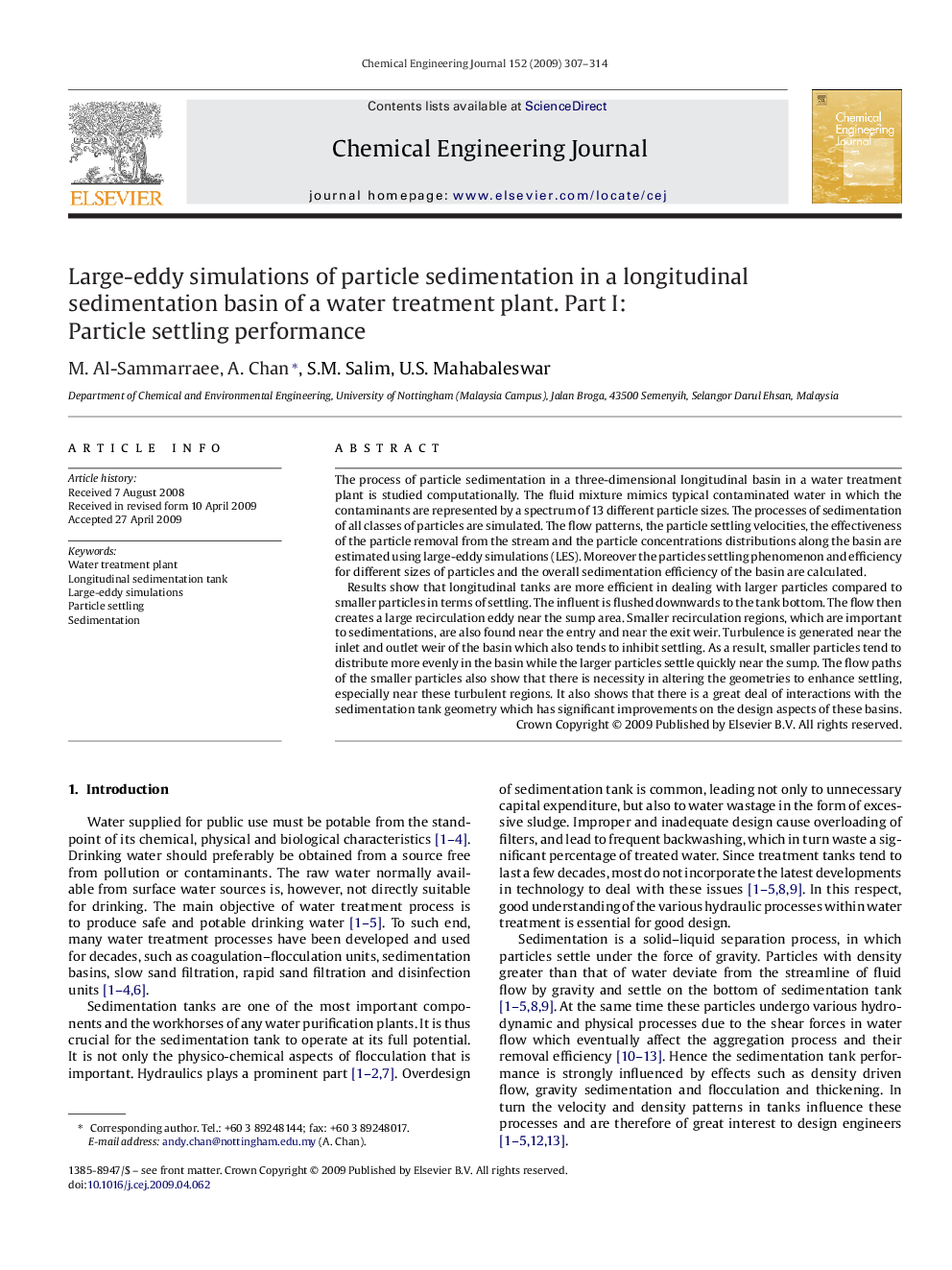| Article ID | Journal | Published Year | Pages | File Type |
|---|---|---|---|---|
| 152113 | Chemical Engineering Journal | 2009 | 8 Pages |
The process of particle sedimentation in a three-dimensional longitudinal basin in a water treatment plant is studied computationally. The fluid mixture mimics typical contaminated water in which the contaminants are represented by a spectrum of 13 different particle sizes. The processes of sedimentation of all classes of particles are simulated. The flow patterns, the particle settling velocities, the effectiveness of the particle removal from the stream and the particle concentrations distributions along the basin are estimated using large-eddy simulations (LES). Moreover the particles settling phenomenon and efficiency for different sizes of particles and the overall sedimentation efficiency of the basin are calculated.Results show that longitudinal tanks are more efficient in dealing with larger particles compared to smaller particles in terms of settling. The influent is flushed downwards to the tank bottom. The flow then creates a large recirculation eddy near the sump area. Smaller recirculation regions, which are important to sedimentations, are also found near the entry and near the exit weir. Turbulence is generated near the inlet and outlet weir of the basin which also tends to inhibit settling. As a result, smaller particles tend to distribute more evenly in the basin while the larger particles settle quickly near the sump. The flow paths of the smaller particles also show that there is necessity in altering the geometries to enhance settling, especially near these turbulent regions. It also shows that there is a great deal of interactions with the sedimentation tank geometry which has significant improvements on the design aspects of these basins.
